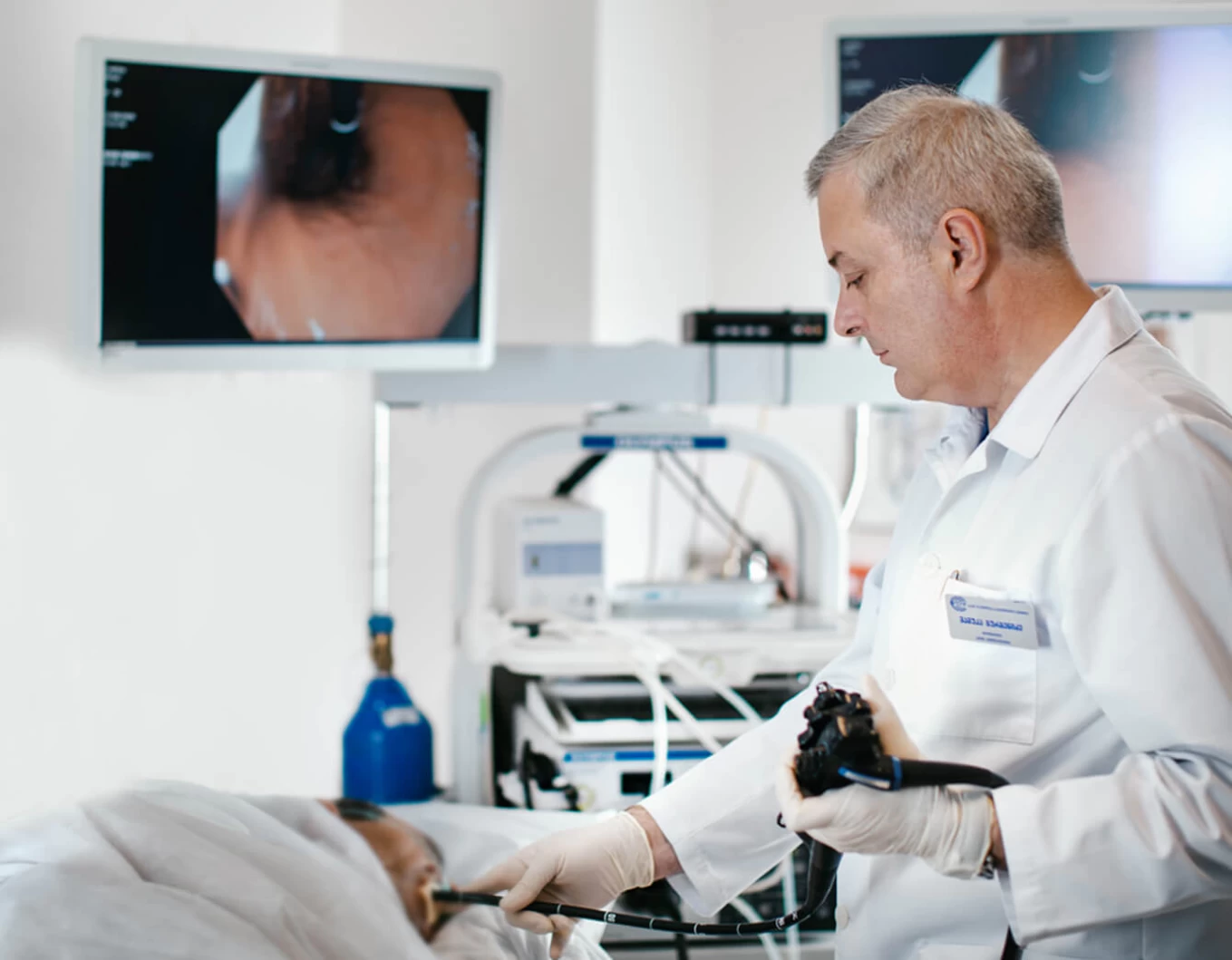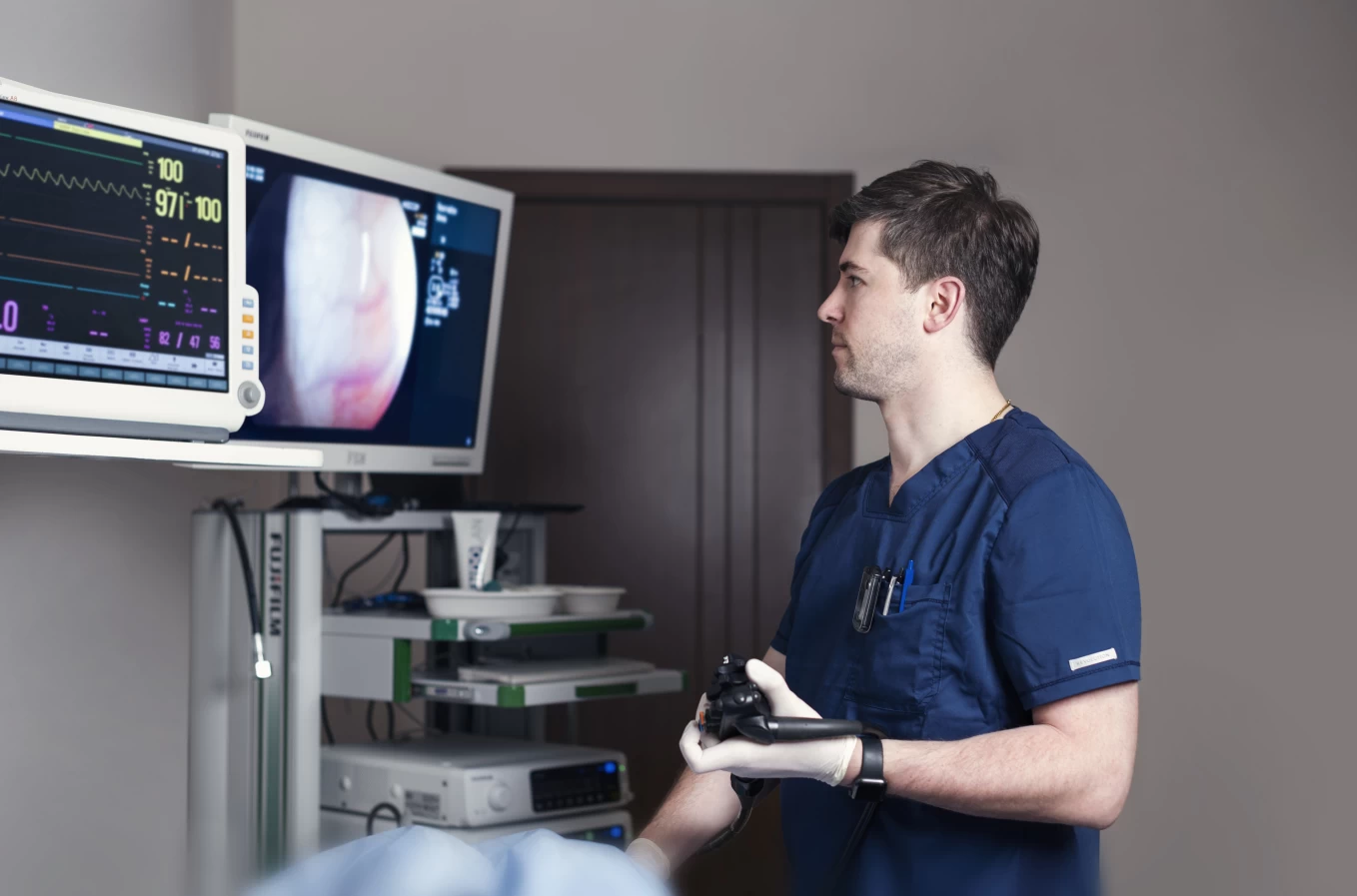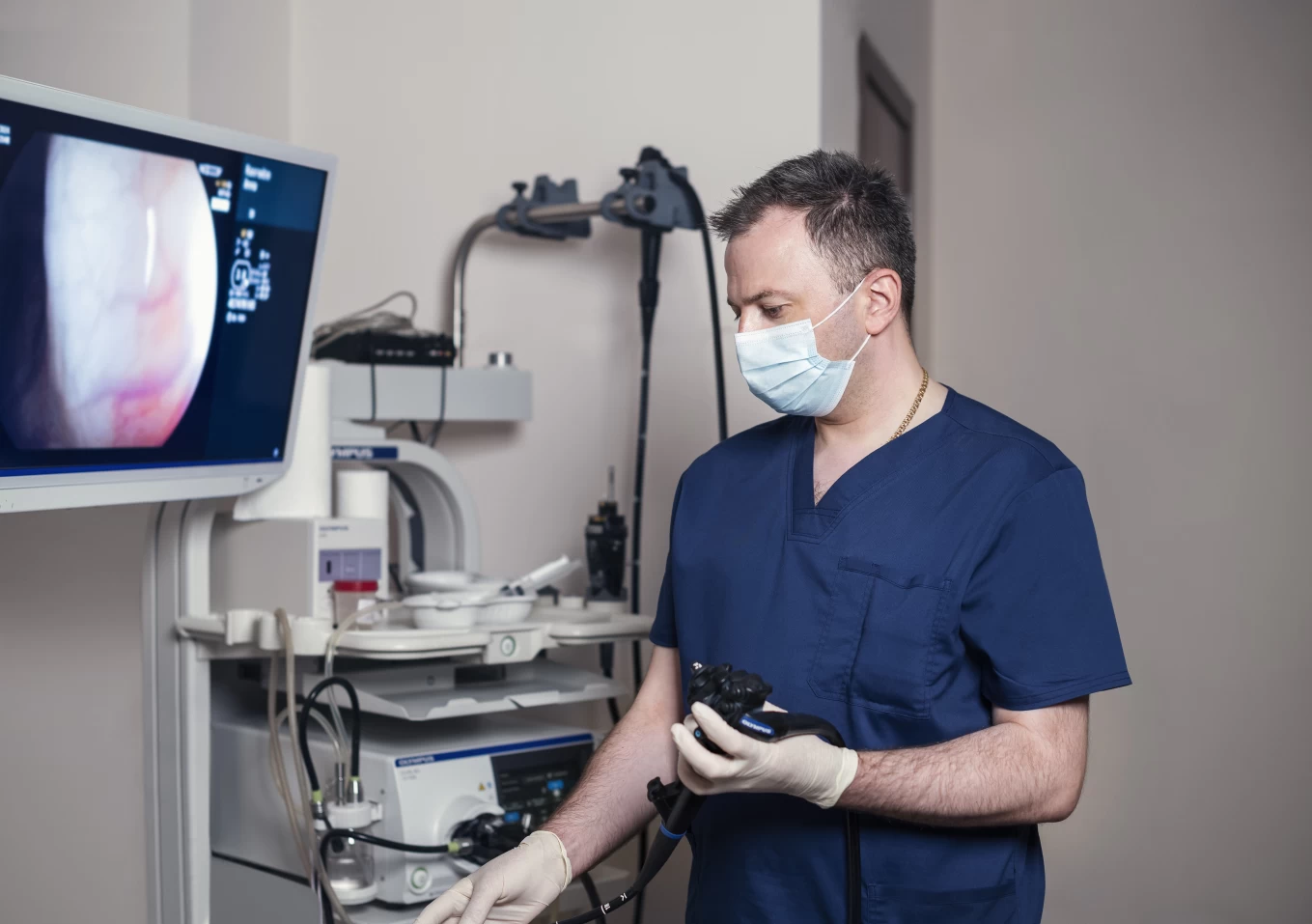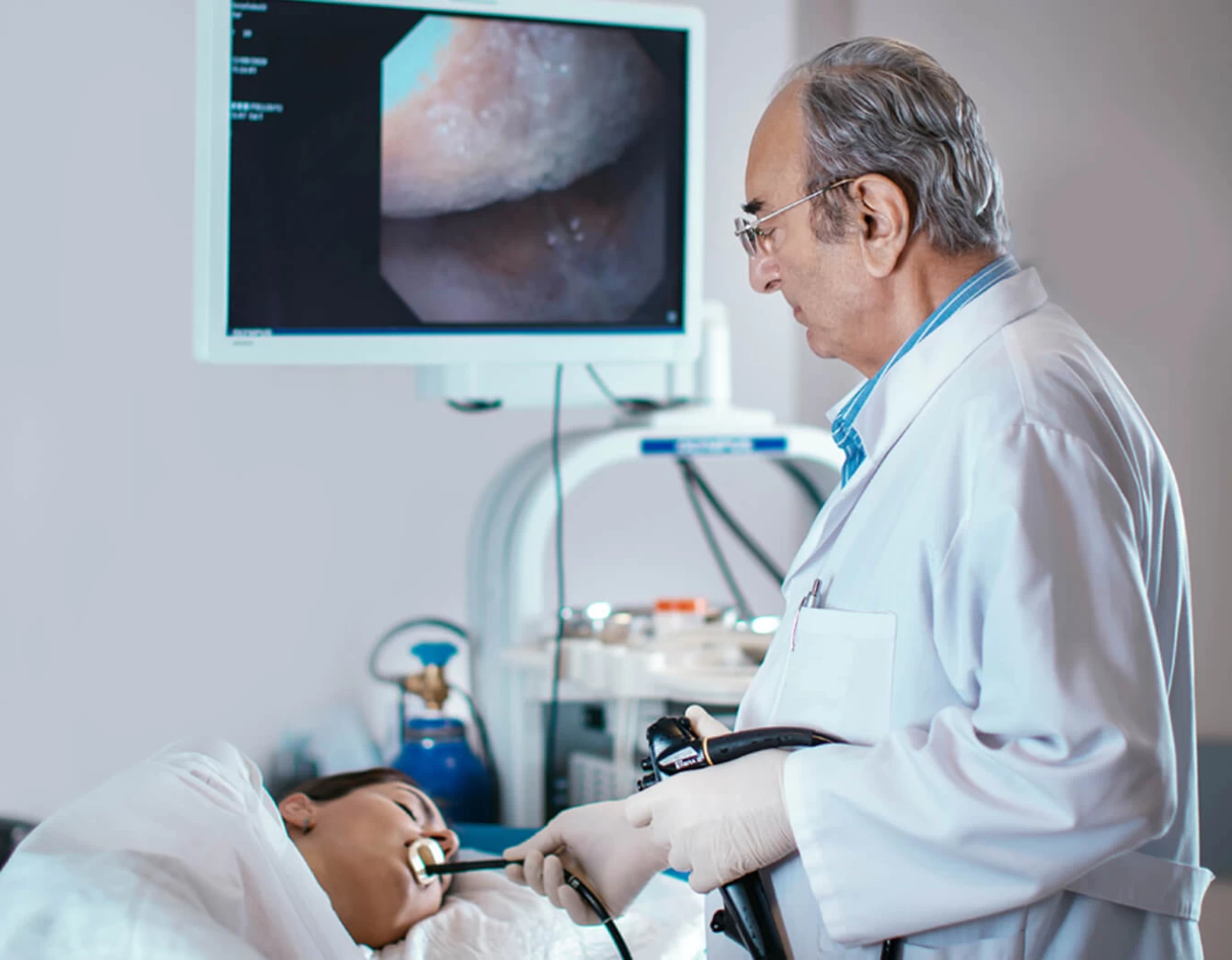Department of Endoscopy and Endosurgery
Head of the department - Mamuka Gurgenidze
The department is equipped with the state-of-the-art digital endoscopic system EVIS X1 by OLYMPUS, which is distinguished by its high image quality, enabling a clearer study of pathological processes. Compared to previous models, the EVIS X1’s dual-focus video camera allows for a closer examination of the area of interest. The system’s close-focus visualization and color-change functionality facilitate early-stage diagnosis of existing pathology.
The EVIS X1 represents the gold standard in the diagnosis of precancerous conditions and the visualization of neoplastic formations. With the NBI (Narrow Band Imaging) function, microscopic visualization of tissue capillary networks is possible, enabling the differentiation of various diseases. The endoscopic ultrasound functionality has been significantly improved compared to other endoscopic systems, allowing for ultrasonic examination of specific areas during endoscopic procedures.
What is Endoscopy?
Endoscopy is a medical procedure that involves the use of an endoscope, a flexible tube equipped with light and a camera, to examine the internal organs of the human body.
During endoscopy, the endoscope is introduced into the body through a natural opening or a small artificial incision, allowing the physician to view various areas of the body without invasive surgery. For example, the examination of the large intestine using this method is referred to as colonoscopy.
The procedure also allows for the collection of tissue samples (biopsy) for further analysis.
Endoscopy is commonly used to diagnose conditions such as ulcers, inflammation, and tumors.
When performed by a professional in a sterile environment, endoscopy is associated with minimal risks and is considered safe.
What is Endosurgery?
Endosurgery refers to minimally invasive surgery performed using an endoscope. This includes procedures such as the removal of polyps or the cessation of bleeding.
The advantages of endosurgery include:
- Reduced Trauma: Small incisions reduce the risk of tissue damage and bleeding, leaving minimal scarring.
- Shorter Rehabilitation Period: The minimal invasiveness promotes faster regeneration and healing, allowing patients to return to their daily activities sooner.
- Lower Risk of Postoperative Complications: Smaller incisions and less bleeding reduce the likelihood of infections and other complications, resulting in less pain and discomfort.
Procedures Conducted in the Department:
- Endoscopic examination of the esophagus, stomach, duodenum, and large intestine, detection of Helicobacter pylori via biopsy.
- Endoscopic ligation of varicose veins of the esophagus.
- Balloon dilation for stenosis caused by achalasia, burns, and anastomosis of the esophagus.
- Detection of early forms of gastric cancer.
- Treatment of stenosis caused by esophageal, gastric, or intestinal tumors with stents.
In addition to diagnostic procedures, various therapeutic endosurgical manipulations can also be performed.
- Endoscopic diagnosis and endoscopic polypectomy of polyps, mucosal resection.
- Endoscopic and morphological assessment of various forms of colitis.
- Endoscopic diagnosis and treatment of biliary tract diseases (papillotomy, stenting, and balloon dilation).
- Thermal hemostasis and devitalization.
Examinations are performed under local anesthesia or intravenous sedation.
Scientific Directions:
- Diagnosis and treatment of diseases of the hepatopancreatoduodenal zone.
- Early diagnosis and treatment of digestive system cancers.
- Endoscopic ultrasound in the diagnosis of digestive system diseases.
Endoscopes undergo mechanical processing using an automatic disinfection device, followed by enzymatic disinfection and antiseptic sterilization. The endoscopic equipment is treated both internally and externally, with full sterilization of the manipulation channels. As a result of the automatic disinfection and sterilization of the endoscope, all types of infections are eliminated, including fungal infections, HIV, hepatitis C, and tuberculosis.





